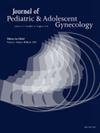4. A Qualitative Needs Assessment for the Research of Reproductive Tract Anomalies
IF 1.8
4区 医学
Q3 OBSTETRICS & GYNECOLOGY
引用次数: 0
Abstract
Background
Adolescence is a critical period for the clinical diagnosis, management, treatment, and research of reproductive tract anomalies. There are critical gaps in knowledge regarding best treatment approaches, particularly regarding surgical management and associated long-term outcomes. This qualitative study was conducted to assess the feasibility of a multi-institutional database or registry of children and adolescents with reproductive tract anomalies.
Methods
We purposively recruited geographically diverse focus group participants based on their publication record, clinical experience, and knowledge in reproductive tract anomalies. Two virtual focus groups were conducted in March of 2024. The PI moderated the focus groups and a co-investigator served as the observer/note-taker. The focus groups were one hour in duration and followed a semi-structured format. Focus group participants were compensated for their time. Focus group audio recordings were transcribed by a professional transcription company. After an initial familiarization with the data, the investigators developed a codebook and applied codes line-by-line to transcriptions to allow prominent themes to emerge.
Results
A total of nine participants joined the two focus groups. See table for themes and illustrative quotes. Participants reported there is very limited research and outcome data available to guide counseling of patients with reproductive tract anomalies. Participants identified a myriad of important and unanswered questions regarding the diagnosis and management of reproductive tract anomalies, linked to differences in management across different institutions. They identified several challenges and barriers to research, including the heterogeneity of these conditions and limited clinician time dedicated to complete this research, which make the development of a multi-institutional database or registry difficult. Participants discussed the need for patients to be involved in developing research agendas and identifying important outcomes. See table for themes and illustrative quotes.
Conclusions
There is significant variability in the presentation and management of reproductive tract anomalies with limited outcome data. Surgeons and researchers recognize the need for high-quality data and to develop patient-centered outcomes. A collaborative research database focused on rare and difficult to manage anomalies (i.e. obstructive or vaginal anomalies) is needed but will require overcoming several barriers.
4. 生殖道异常研究的定性需求评估
背景青春期是生殖道异常的临床诊断、管理、治疗和研究的关键时期。在关于最佳治疗方法的知识方面存在重大差距,特别是关于手术治疗和相关的长期结果。本定性研究是为了评估多机构数据库或登记的可行性与生殖道异常的儿童和青少年。方法根据发表文献、临床经验和对生殖道异常的了解,有针对性地招募不同地域的焦点小组参与者。两个虚拟焦点小组在2024年3月进行了调查。私家侦探主持了焦点小组,一名共同调查员担任观察员/记录员。焦点小组的时间为一小时,采用半结构化的形式。焦点小组参与者的时间得到了补偿。焦点小组录音由专业誊写公司誊写。在初步熟悉了数据之后,调查人员开发了一个代码本,并对转录文本逐行应用代码,以便突出主题。结果共有9名参与者加入了两个焦点小组。见表的主题和说明性引用。与会者报告说,有非常有限的研究和结果数据,可用于指导咨询患者的生殖道异常。与会者确定了无数关于生殖道异常的诊断和管理的重要和未解决的问题,这些问题与不同机构的管理差异有关。他们确定了研究的几个挑战和障碍,包括这些疾病的异质性和有限的临床医生致力于完成这项研究的时间,这使得多机构数据库或登记处的发展变得困难。与会者讨论了患者参与制定研究议程和确定重要结果的必要性。见表的主题和说明性引用。结论生殖道异常的表现和处理存在显著差异,结果资料有限。外科医生和研究人员认识到需要高质量的数据和开发以患者为中心的结果。需要建立一个以罕见和难以管理的异常(即阻塞性或阴道异常)为重点的合作研究数据库,但需要克服几个障碍。
本文章由计算机程序翻译,如有差异,请以英文原文为准。
求助全文
约1分钟内获得全文
求助全文
来源期刊
CiteScore
3.90
自引率
11.10%
发文量
251
审稿时长
57 days
期刊介绍:
Journal of Pediatric and Adolescent Gynecology includes all aspects of clinical and basic science research in pediatric and adolescent gynecology. The Journal draws on expertise from a variety of disciplines including pediatrics, obstetrics and gynecology, reproduction and gynecology, reproductive and pediatric endocrinology, genetics, and molecular biology.
The Journal of Pediatric and Adolescent Gynecology features original studies, review articles, book and literature reviews, letters to the editor, and communications in brief. It is an essential resource for the libraries of OB/GYN specialists, as well as pediatricians and primary care physicians.

 求助内容:
求助内容: 应助结果提醒方式:
应助结果提醒方式:


